Concerning the variants, I will consider an existing one as soon a I have seen at least two identical models having exactly the same characteristics, and without any mark of alteration (rivets, axles).
For the family photograph, I obviously choosed unusual versions of each model... The all-cream 25M Bedford Tipper, the red 521 Bedford Articulated Truck, one of the lasts 25V/252 Bedford Refuse Truck with plastic hubs & shutters, the very unusual bicolor 25W truck and the all dark blue 582 Bedford Pullmore Transporter. Other unusual versions to discover in future posts !
Everything started here
THE MODELS
Five models are included in this survey :
• 25M/410 BEDFORD END TIPPER
• 25W/411 BEDFORD WAGON
• 25V/252 BEDFORD REFUSE WAGON
• 521/921/409 BEFDORD ARTICULATED TRUCK
• 582/982 BEDFORD PULLMORE AUTO TRANSPORTER
The production of these five models lasted over 16 years, between 1948 and 1964, and during these years many changes occurred. I will review these changes below and in the future posts.
For the administrative aspect, all the models had one or two renumbering, mainly during the 1954 renumbering.
In this first post, I will detail the casting variants of the main part of the truck, the cab-chassis casting, and the different versions of the baseplate, both parts common to all the above models.
REVIEW OF THE CASTING VARIANTS SHARED BY ALL THE MODELS
THE CAB-CHASSIS CASTING
The chassis and cab of the BEDFORD trucks is made of one single casting. Other parts are mounted on this main casting, according to the different models : tipping or static rear bed, refuse container or coupling facility on the both articulated trucks. The cab-chassis casting has two main variants, and therefore two different dies have existed (Photos 1, 2, 3 and 4) :
• Thin chassis viewed from the side, with the bottom of the front wings squared, aligned to the bottom of the front bumper, little rounded knobs protruding on each side to keep the rear wheels away from the chassis, hole for the lifting mechanism with squared angles, no reinforcement under the chassis on the fuel tank side, thin moulding of the crank hole. In the following, I will call this type of chassis as "C-type" (C being the initial of "carré" which means squared in French...)
• Thick chassis viewed from the side, with the bottom of the front wings rounded, aligned to the top of the front bumper, big triangular reinforcements to keep the rear hubs away from the chassis, hole for the lifting mechanism with rounded angles, reinforcement under the chassis on the fuel tank side, and thick moulding of the crank hole. This type of chassis will be called "R-type" in the following.
Photo 1 : Différences between the front wing mouldings : left C-type, right R-Type
Photo 2 : Both types of chassis viewed from the side : C-type on top, R-type at bottom.

Photo 3 : Details of the chassis from underside : left C-type, right R-Type.
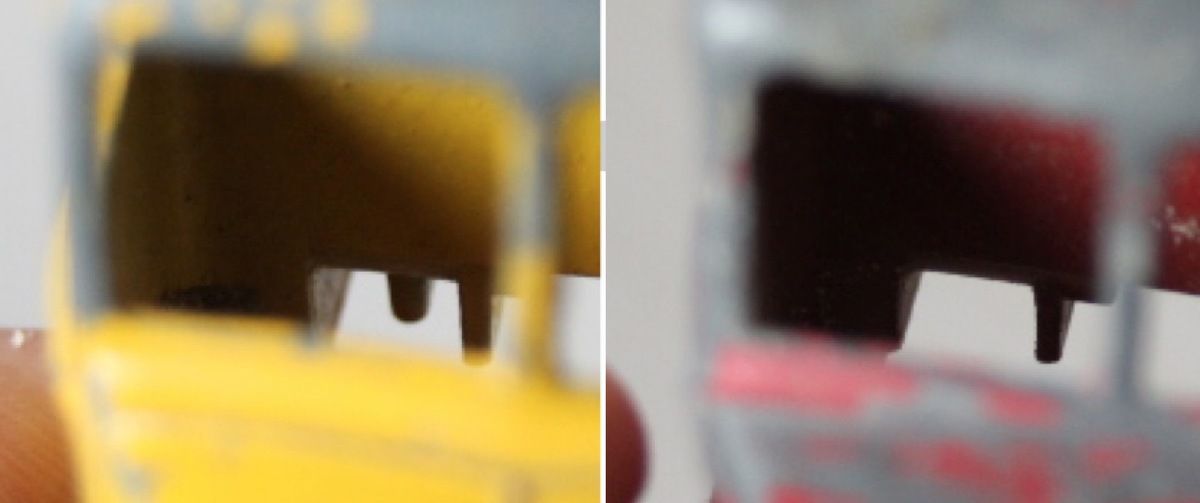
Photo 4 : Reinforcement visible or not through the cab : left R-Type, right C-Type.
It's quite stunning that these difference are nowhere mentioned on the factory drawings, although having co-existed during a significant part of the models production. R-type seems to have existed for a shorter time than C-type, as all the models fitted with windows are C-Type, as the very first unicolor tippers.
Both major types have known several casting variants :
• Single or "reinforced" fuel tank. This variant could be explained by a break of the die, but I think that the dies have been intentionally modified for an easy exit of the castings. This explains the similar changes to both of the types (again nothing noticed on the factory drawings), and it must be noticed, according to my explanation, that the little rounded knobs on C-type have been simultaneously "reinforced" with the fuel tank.

• Differences of the moulding of the front axle supporting leg (the front of the truck being on the right side of the pictures) : at the beginning, separate casting, and progressive junction with the front wing (not mentioned on any factory drawings).
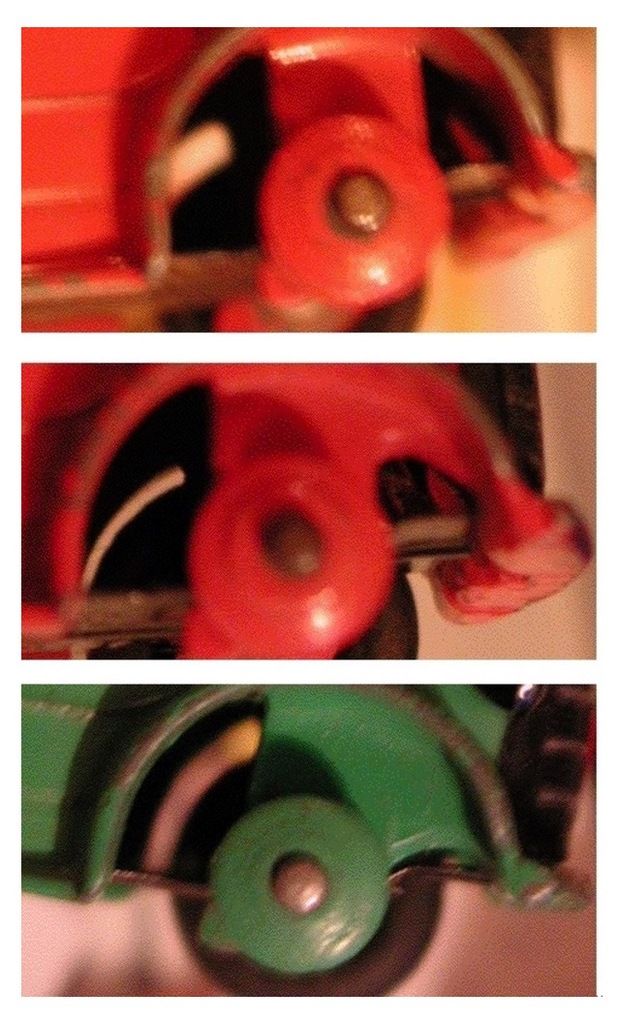
• Engraving of MADE IN ENGLAND on the rear of the chassis when deleted from the baseplate.

• Addition of a spigot in the cab roof, designed to hold the windows. This variant without glazing has been seen only on the green refuse truck without windows.
Considering the listed variants, especially those concerning the fuel tank and the front axle, it is possible that the number of the dies was more than two (models with reinforced tank and front axle supports separated from the front wings have been recorded). The dies can also have been mixed... Although having seen numerous factory drawings, I never saw any drawing of the dies themselves (nor any listing) and this supposed mix of the dies is my own interpretation.
Unlike the COMMER (please see my previous post) and many cars of the same period (especially the 40 series), the BEDFORD wording has never been engraved on the cab-chassis casting.
The cab-chassis casting is always paint with one unique color, with the front bumper painted black (except on the very last models having a silver painted radiator, where the bumper is also painted silver), and the front wings painted black on the articulated trucks. The front wings of the very first 25W trucks were also painted black during a short period.
To be continued...
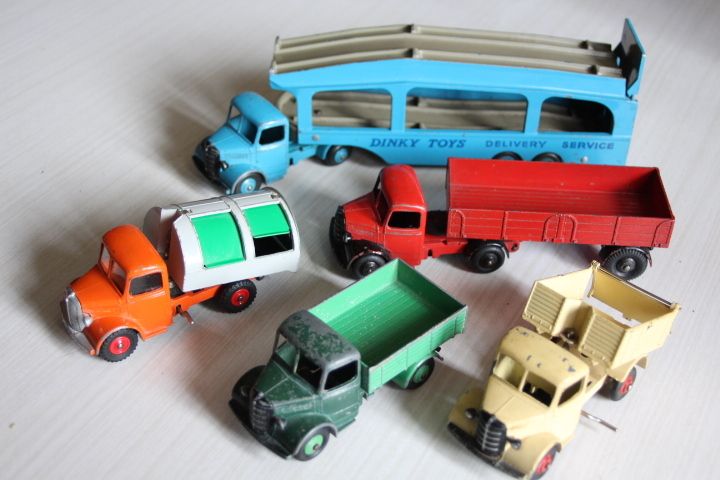


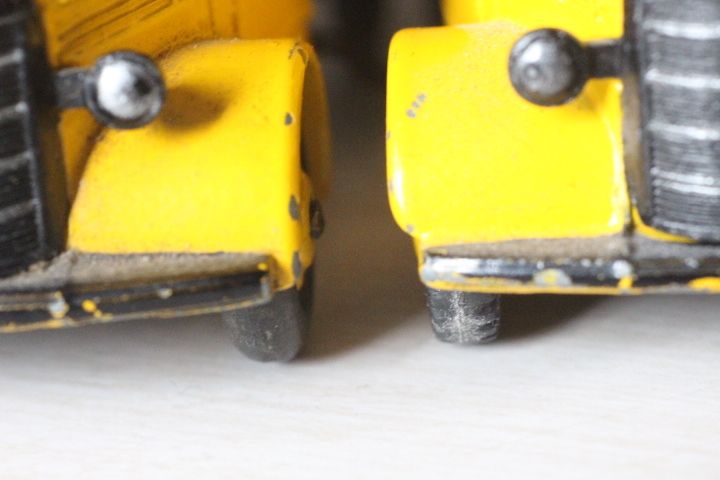
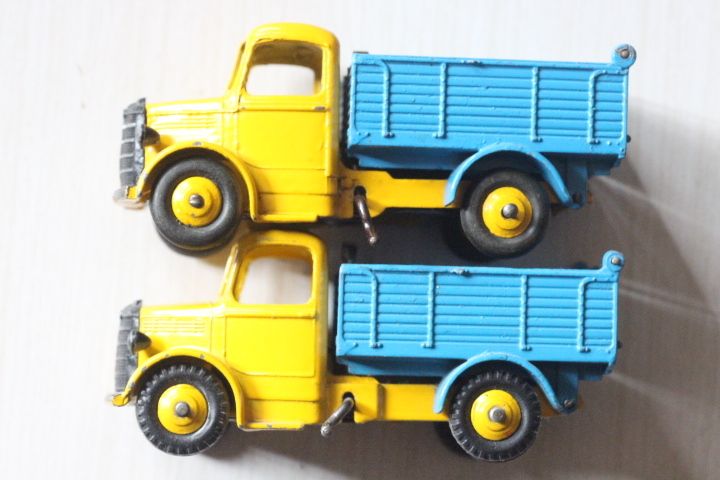
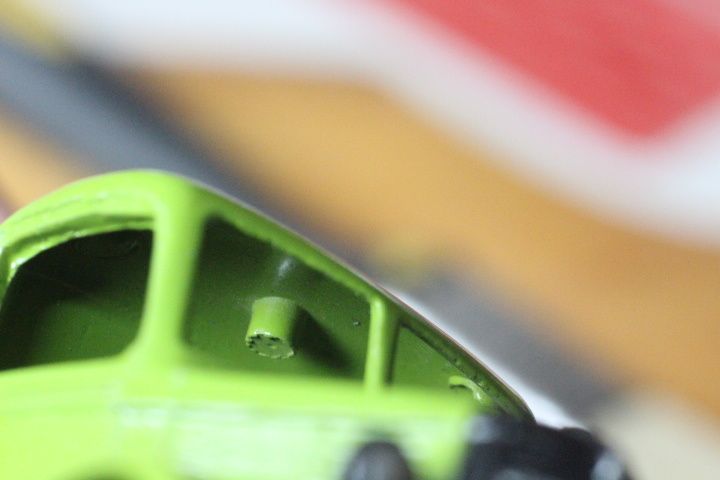



No comments:
Post a Comment